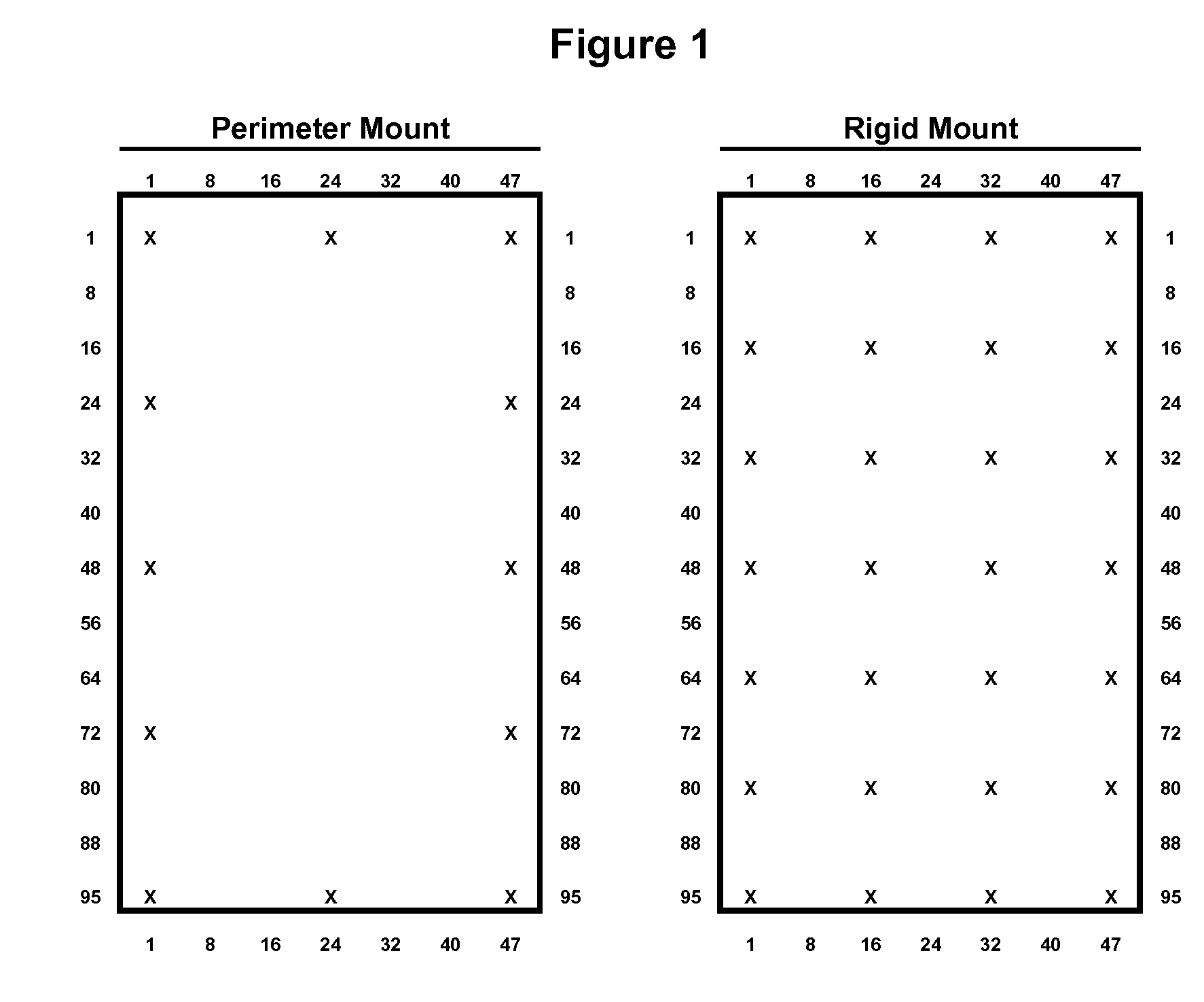Method for reducing flame spread
a flame spread and flame technology, applied in fireproofing, building components, etc., can solve the problems of difficult work, lack of design versatility, and material requirements for building and construction applications, and achieve the effect of reducing flame spread and certain properties
- Summary
- Abstract
- Description
- Claims
- Application Information
AI Technical Summary
Benefits of technology
Problems solved by technology
Method used
Image
Examples
example 1
[0103] Sheet samples of polymer A having a thickness of 0.236 inches (6 mm) were tested according to NFPA 286 using the walls only configuration and the perimeter mounting technique. Visible inspection during the burn test showed no discernable peeling or sagging of the sheet during the initial low burn phase of the test. As a result, the sheet did not comply with item 2 of the acceptance criteria as defined by the test.
example 2
[0104] Sheet samples of polymer B having a thickness of 0.236 inches (6 mm) were tested according to NFPA 286 using the tested in a walls only configuration and the perimeter mounting technique. About 3 minutes into the test, both corner panels showed mild distortion or “shimmering” across 50 to 75% of their respective surfaces. This distortion is from softening of the sheet and relaxation of molded in stresses (e.g. polishing induced stresses). After about 4 minutes, there was noticeable curling in the corner above the flame of about 5% to 10% of the total panel surface area. The test sample showed curling and sagging in the vicinity of, and above the flame, to the extent that it was not in the direct flame for much of the low burn phase of the test. During the high burn phase, the panels curled / distorted away from the flame over about 50% of the surface area. The sample passed all of the acceptance criteria as defined by the test.
example 3
[0105] Sheet samples of polymer C having a thickness of 0.236 inches (6 mm) were tested according to NFPA 286 using the walls only configuration and the perimeter mounting technique. Within the first 2 minutes of the test, flow-type lines appeared at the top 10% or so of the panels indicating that distortion was already beginning to occur. Wavelike distortions were visible over 60 to 70% of the panel surface within the first 4 minutes, and curling of the sheet in the corner of the room was visible over 5 to 10% of the sheet. During the high watt burn stage, curling sagging was visible over about 50% of the panel surface in a direction downward and away from the flame. The test sample passed all of the acceptance criteria as defined by the test.
PUM
| Property | Measurement | Unit |
|---|---|---|
| shrinkage | aaaaa | aaaaa |
| temperature | aaaaa | aaaaa |
| distance | aaaaa | aaaaa |
Abstract
Description
Claims
Application Information
 Login to View More
Login to View More - R&D
- Intellectual Property
- Life Sciences
- Materials
- Tech Scout
- Unparalleled Data Quality
- Higher Quality Content
- 60% Fewer Hallucinations
Browse by: Latest US Patents, China's latest patents, Technical Efficacy Thesaurus, Application Domain, Technology Topic, Popular Technical Reports.
© 2025 PatSnap. All rights reserved.Legal|Privacy policy|Modern Slavery Act Transparency Statement|Sitemap|About US| Contact US: help@patsnap.com



